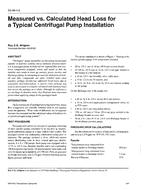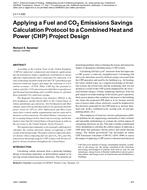This article presents a novel framework by integrating the existing asset management theory with building simulation technology to develop effective and optimal maintenance strategies for the purpose of reducing the energy footprint of buildings while ensuring that building performance and business objectives are met. The optimality criteria take into account not only the energy consumption in engineering terms, but also the value that the building assets generate with respect to building business missions and objectives.
An energy efficient asset with minimal stoppages due to failures or replacements, coupled with minimal loss of productivity due to occupant discomfort would certainly generate high asset values. A computationally efficient optimization algorithm is also presented to overcome computational deficiencies of building energy simulation models in lieu of long simulation runs. Through several case studies, we argue that while the maintenance plans seem intuitive, especially by experts, the details of these plans (together with cost factors that are broken down into energy, maintenance, and penalty terms) can significantly help facility managers and building owners to strategize their investments and maximize their annual return on savings. The optimization engine is sufficiently flexible to connect to different simulation engine and forecasting models, and is also able to receive near real time and historical data from different platforms.
Citation: ASHRAE Transactions – Volume 120, Part 2, Seattle, WA
Product Details
- Published:
- 2014
- Number of Pages:
- 13
- File Size:
- 1 file , 1.9 MB
- Product Code(s):
- D-SE-14-038


